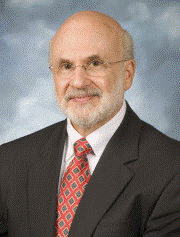By: Mary Lou Valdez
FDA is responsible for ensuring the safety and quality of tens of millions of foreign shipments of human food, animal feed, medical products and cosmetics that come into the United States every year. Many source countries are part of the developing world that is still forming its economic and industrial base. Thus, we have strong public health interests in making sure that the countries of origin have effective systems of regulatory oversight.
 Strengthening the ability of developing countries to regulate their industries could also produce tremendous benefits for the health and quality of life of individuals and communities in those countries. Additionally, the development of stronger regulatory systems in other countries can bolster other U.S. government investments in public health, trade and economic development.
Strengthening the ability of developing countries to regulate their industries could also produce tremendous benefits for the health and quality of life of individuals and communities in those countries. Additionally, the development of stronger regulatory systems in other countries can bolster other U.S. government investments in public health, trade and economic development.
To enhance FDA’s knowledge of global public health trends, the Office of International Programs launched The Commissioner’s Global Health Lectureship in 2010. The lectureship invites highly respected and recognized leaders in global health to speak to FDA staff, and help the agency explore its role as a public health agency of the 21st century and consider the critical functions of regulatory science and systems that contribute to improved public health.
Participating thought leaders have included:
- Julio Frenk, M.D., M.P.H., Ph.D., Dean of the Harvard School of Public Health
- Margaret Chan, M.D., Director-General of the World Health Organization
- Sir George Alleyne, M.D., Director Emeritus of the Pan American Health Organization
- Maria Freire, Ph.D., former President of the Albert and Mary Lasker Foundation and now President of the Foundation for the National Institutes of Health
- Nils Daulaire, M.D., M.P.H., Director of the Office of Global Affairs, U.S. Department of Health and Human Services
- Trevor Mundel, M.D., President of the Global Health Program, Bill & Melinda Gates Foundation
These lectures have inspired FDA staff to remain vigilant in protecting U.S. consumers and patients from harmful products, and to take action globally. For example, following Dr. Chan’s lecture, FDA is working with WHO and its member states on a long-term strategy for strengthening the review of applications for new pharmaceutical products and vaccines.
Similarly, as a result of Dr. Mundel’s lecture, FDA and the Gates Foundation have committed to developing key messages on the strengthening of regulatory systems that the foundation and the agency can consistently and collaboratively deliver to governments and public or private institutions. Here, the Gates Foundation, through its investments in product development partners, supports research and development of medical products to treat diseases affecting poor and vulnerable populations in developing countries. Strong regulatory systems are also essential to ensuring that these products meet science-based quality and safety standards before they are approved for sale, and can be monitored afterwards. The Gates Foundation recognizes the need for regulators to make informed decisions about what products enter their markets.
Our Global Health Lectureship has provided—and with future speakers will continue to provide—opportunities for FDA staff to engage in issues in new and unique ways, changing the agency’s global lens as we work to expand the product safety net all over the world. To learn more about FDA’s global strategies, read the “Pathway to Global Product Safety and Quality.”
Mary Lou Valdez is FDA’s Associate Commissioner for International Programs








